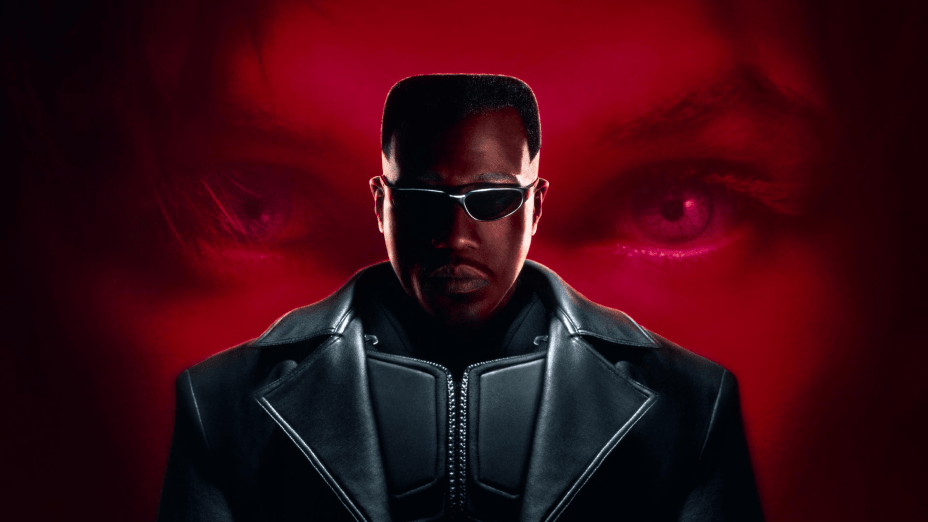Marvel’s groundbreaking vampire hunter film Blade nearly concluded with an ambitious crossover that would have connected it to another one of Marvel’s bloodsuckers. The 1998 film, which helped establish Marvel’s credibility in Hollywood years before the Marvel Cinematic Universe existed, originally included a post-credits scene featuring Morbius, the Living Vampire.
Videos by ComicBook.com
The Lost Ending That Could Have Changed Everything
The theatrical release of Blade concludes with Wesley Snipes’ Daywalker and Karen Jensen sharing a decisive moment on a rooftop, where she offers him a cure for his vampirism. Blade refuses the proposal, preferring to keep his supernatural powers to continue hunting down creatures of the night. Instead, he asks Karen to make him a stronger serum to control his bloodlust, the obvious downside of being a half-vampire. The scene sets up the character’s ongoing struggle with his dual nature, which would be a recurring theme for the whole Blade trilogy.
However, director Stephen Norrington had filmed an additional sequence that would have introduced Morbius, the Living Vampire. In the scene, Norrington himself portrays the character in a billowing coat, mysteriously observing Blade from a nearby building while the Daywalker has his heart-to-heart with Karen. This deleted scene represented more than just a simple cameo. It was a promise for the future.
In the broader context of Marvel Comics’ vampire mythology, Morbius and Blade share a complex relationship, often finding themselves both at odds and reluctantly working together. Including Morbius at the end of Blade would have opened up numerous storytelling possibilities, potentially setting up a rivalry between two characters who struggle with similar demons but approach their conditions from vastly different perspectives.
The decision to remove this scene ultimately altered the franchise’s direction, leading to sequels that explored different aspects of vampire mythology instead. Still, although Blade II would go on to introduce the Reapers and Blade: Trinity would bring in Dracula himself, the lost opportunity of a Blade-Morbius confrontation represents one of Hollywood’s most intriguing “what-if” scenarios in superhero cinema.
Blade’s Impact on Hollywood Would Only Be Bigger With Morbius

When Blade hit theaters in 1998, the superhero genre was considered box office poison. The disastrous reception of Batman & Robin had seemingly killed the audience’s appetite for comic book adaptations, and studios were hesitant to invest in superhero properties. Blade changed everything by proving that a comic book movie could succeed by embracing a darker, more mature tone while maintaining commercial appeal. So, not only did Blade show comic book adaptations could be profitable, but it did it while sticking to an R rating and featuring a Black protagonist — both things the MCU would avoid for years.
This success provided Marvel with its first genuine hit at a time when the company was struggling financially. Even though 2000’s X-Men and 2002’s Spider-Man would later receive credit for launching the modern superhero film era, Blade first proved Marvel properties could succeed on the big screen.
Knowing that Blade was already nodding at Morbius in 1998 only increases our admiration for the movie. The original film’s approach to world-building, including the deleted Morbius scene, was remarkably prescient. Years before post-credits scenes became a staple of superhero cinema, Blade attempted to create connections between different Marvel characters, suggesting a shared universe ahead of its time. It would take a decade for Iron Man to try something similar with its famous Nick Fury scene.
Blade and Morbius Are Still Part of Hollywood’s Superhero Game

Blade could have been even more significant than it was, but history went another way. Instead of the Blade-Morbius crossover, the franchise continued with two sequels. Though the trilogy’s quality declined with each installment, the first two films remain influential pieces of superhero cinema. As for the two characters, they follow different paths in the current superhero landscape.
Marvel Studios is developing a new take on Blade with Mahershala Ali in the titular role, though the project has faced significant setbacks. After losing multiple directors and undergoing several script revisions, the film was recently removed from its planned November 2025 release date. However, Marvel chief Kevin Feige maintains that Blade will definitely appear in the MCU, though whether in a standalone film or as part of other projects remains unclear.
As for the original Blade, Wesley Snipes recently appeared in the billion-dollar wonder Deadpool & Wolverine. The character’s official introduction to the MCU was well received by fans, leading to clamoring in favor of a possible Blade 4. That’s a tough sell, considering Marvel Studios is working on a reboot. Yet, as the “Multiversal Saga” is ongoing, nothing prevents Snipes from getting another cameo.
Meanwhile, Sony’s attempt to launch Morbius as part of its Spider-Man Universe met with limited success. The 2022 film, starring Jared Leto as the Living Vampire, struggled both critically and commercially, casting doubt on sequels. Whereas Sony hasn’t completely closed the door on the character’s return, any future appearances would likely come as part of larger ensemble projects or through potential multiverse crossovers rather than standalone sequels.
Blade is currently available for streaming on Prime Video and can be rented or purchased on various digital platforms.








